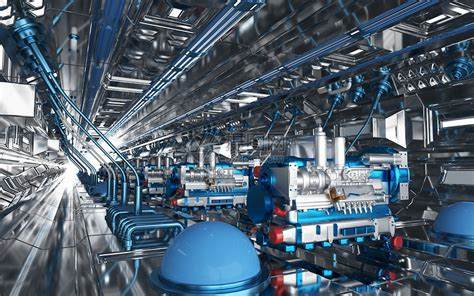In today’s rapidly evolving world of engineering and automation, precision, strength, and reliability are not just desired—they are required. At the heart of many high-performance mechanical systems lies an innovation that has quietly revolutionized the field: the cross roller bearing. Designed to offer superior rigidity and accuracy in compact spaces, these bearings are becoming an essential choice for advanced machinery, robotics, and industrial automation.
Unlike conventional bearings, the cross roller bearing features cylindrical rollers arranged in a crisscross pattern between inner and outer rings. This unique arrangement allows the bearing to simultaneously support radial, axial, and moment loads in all directions—making it incredibly efficient and versatile. The result is a highly rigid and compact bearing solution capable of withstanding demanding operational environments.
One of the most valuable advantages of a cross roller bearing is its exceptional load-bearing capacity and precision. The cross arrangement of rollers minimizes internal clearance, which significantly enhances rotation accuracy. This characteristic is particularly crucial in applications such as medical imaging devices, precision rotary tables, semiconductor manufacturing equipment, and robotic joints, where even the slightest movement can affect overall performance.
Additionally, cross roller bearings are renowned for their space-saving design. Traditional bearing systems often require multiple bearings to handle multi-directional loads. In contrast, a single cross roller bearing can accomplish the same task with greater efficiency and minimal footprint. This is a major benefit in modern design environments where compactness and integration are critical.
Durability is another standout trait of the cross roller bearing. Engineered with high-grade materials and advanced manufacturing techniques, these bearings maintain their performance over extended operating cycles, reducing maintenance requirements and downtime. Their robust construction also ensures resistance against impact and vibration, making them ideal for harsh and high-speed environments.
Furthermore, customization options for cross roller bearings have expanded in recent years, allowing manufacturers to tailor them to specific requirements. Whether it’s high-speed operation, high-load capacity, or specialized coatings for corrosion resistance, these bearings can be adapted for diverse sectors such as aerospace, medical devices, defense systems, and renewable energy.
Another reason for the growing popularity of the cross roller bearing is its contribution to increased efficiency and cost-effectiveness in mechanical systems. By reducing the number of components needed to manage complex load demands, companies can simplify assembly processes, cut down on parts inventory, and lower overall system costs—all without compromising performance.
Engineers and decision-makers looking to stay ahead in a competitive marketplace must consider the strategic advantages of integrating cross roller bearings into their systems. Whether developing state-of-the-art robotic arms or building high-precision turntables, these bearings provide the kind of performance edge that modern applications demand.
In conclusion, the cross roller bearing is not just a trend—it’s a transformation. Its unmatched precision, load-handling capabilities, compact design, and long-term durability make it a cornerstone of next-generation engineering. As industries continue to push the boundaries of innovation, the cross roller bearing stands firm as a reliable, high-performance solution built for the future.
